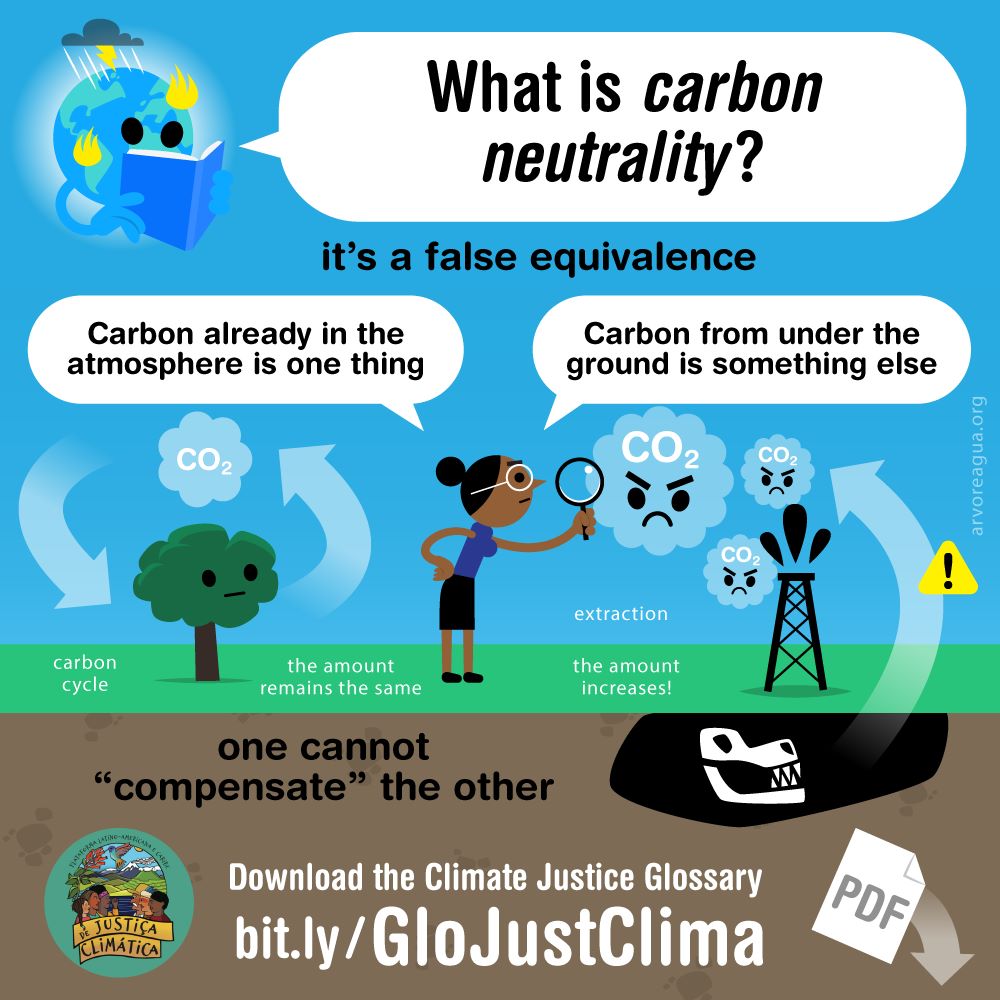
Businesses and governments encourage carbon neutrality as it is considered to effect a radical change in their country’s economy and also eliminate fossil fuels and other gas emission sources like greenhouse gases ‘to any possible extent’.
According to this presupposition, each tonne of fossil CO2 is equaled to a tonne absorbed by plants, oceans, soil, and rock. Nonetheless, this hypothesis does not take into consideration that there are two types of carbon: one extracted from fossils buried for millions of years and the other present in the carbon natural cycle in the troposphere or where life begins to exist. This view assumes that to reach carbon neutrality, millions of trees must be planted to ‘compensate’ for the carbon currently stored either in vegetation, wetlands, soils, and oceans, or stored pursuant to BECCS projects and other proposals.
Even though this carbon-neutrality narrative has no scientific foundation, in practice, it contributes to fostering the belief in technological salvation and eases the feeling of urgency concerning the need to halt underground oil and natural gas extraction. Corporations seek to ‘burn now, compensate later’ (or, in other words, ‘pay to pollute’), and, thus, carbon emissions continue the increase. This false speech on carbon neutrality has also accelerated the annihilation of the natural world by means of an increment in deforested areas and even higher temperatures.
None oil-dependent and high energy-consuming models are carbon neutral.
Download the Climate Justice Glossary: